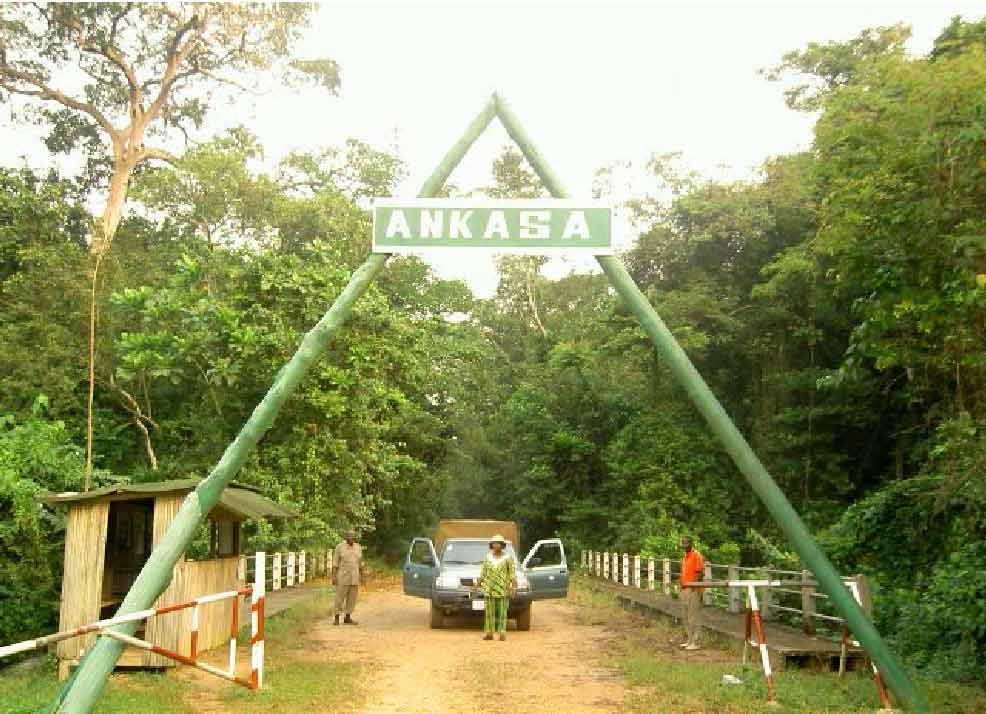Nature is important to the nation Ghana, therefore enabling a conservative program to protect this heritage is of importance to the locals, to be able to enjoy it with tourists as well as pass it on to future generations.
Ghana has a rich natural treasure made up of 16 national parks, resource reserves and wildlife sanctuaries.
From the Savannah of the coastal plains, to the dense tropical forest and the grassland of the north, to the life-giving water bodies distinctly showcase wildlife abound.
Below are some of the beautiful wildlife reserves found in Ghana.
The Ankasa Conversation Area is an area in the Western Region of Ghana, about 365 kilometres west of Accra near the border with Côte d’Ivoire. It has the Nini Suhien National Park in the North, and the Ankasa Forest Reserve in the South.
The park is approximately 500 square kilometres and consists largely of the tropical evergreen rainforest. The Ankasa Conservation Area is the only wildlife protected area in Ghana that is located in the wet evergreen tropical high rainforest belt.[5] The Ankasa, Nini, and Suhien Rivers all pass through the park and are known for their rapids and waterfalls. The forest has the most biological diversity of any in Ghana, with over 800 vascular plant species, 639 butterfly species, and more than 190 bird species.
Animal life includes the elephant, bongo, leopard, chimpanzee, Diana monkey, and other primates. Apart from the forest reserve which was selectively logged until 1976, the rest of the protected area is almost intact.
The park includes basic camping facilities with shelters, toilets, and running water along with many facilities for sitting down and having a chat.
Bia National Park is a national park in the Bia district in the Western Region of Ghana. It is said to have some of Ghana’s last remnants of relatively untouched forest complete with its full diversity of wildlife. Some of the tallest trees left in West Africa are found in this national park.
It constitutes a twin conservation area which is called the Bia National Park and the Bia Resource Reserve.
Bia which was created in 1935 was named after the Bia River which drains the area.
It became an official national park in 1974.
Intensive farming destroyed much of the original vegetation in the park. However, since 1975, no human activities like farming or logging have taken place. In 1985 the park was named a biosphere reserve and a UNESCO world heritage site.
There are 62 species of mammals (including 10 primate species which are the Black and White colobus, the olive colobus, red colobus monkeys and chimpanzees) are known to live in the park, and over 189 species of birds, including the endangered white-breasted guinea fowl, Black Collared lovebird, Cassin’s Hawk Eagle, Honeyguide Greenbul, Black-headed Oriole, Brown and Puvel’s illadopsis, finch’s flycatcher thrush, Grey Crown Negrofinch, Western Nicator, spotted Greenbul, Grey-headed bristlebill, Fire-bellied Woodpecker, melancholy woodpecker among others can be found there.
The park is also the only known home of the newly discovered species of lizard, Agama sylvanus. Ghana’s major protected forest antelope communities also live in the park. The forest elephant and the bongo which is claimed to be highly threatened can be found there.
There are walking trails and roads which lead to the reserve of the forest. The wild animals and the birds can be spotted. Researchers, scientific and ecological studies can be done in the reserves as it creates opportunities for them. Snail can also be picked in the park.
A cultural site called Apaso is located in the park closer to two small pools and it is claimed to be a sacred place to people who visit to sacrifice and give gifts to their gods.
The last but definitely not the least reserve we will talk about today is the Dense Delta Protected area, nestled in the beautiful city of Accra.
If you are in Ghana, you can travel around the national protected areas for a memorable wildlife experience in the lap of Ghana’s beautiful natural surroundings. This is a small reserve which is most famous for the birds that migrate here and make the place look like a ‘bird paradise. The place includes all the basic amenities such as shelters, toilets, and running water along with many facilities to make your visit comfortable. If you are planning a day out with family and kids, this could a great option for you.
SOURCE: https://www.ghana.travel/nature-and-wildlife/


